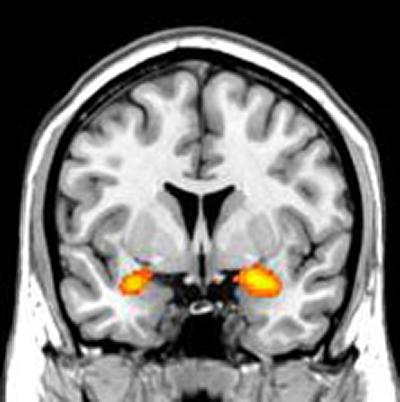Brain scans reveal differences in brain structure in teenagers with severe antisocial behaviour

Brain scans of aggressive and antisocial teenage boys with conduct disorder (CD) have revealed differences in the structure of the developing brain that could link to their behaviour problems.
The study, which was conducted by Dr Graeme Fairchild, now at the University of Southampton, and led by neuroscientists at the University of Cambridge, reveals that the brain differences were present regardless of the age of onset of the disorder, challenging the view that adolescence-onset CD is merely a consequence of imitating badly behaved peers.
CD is a psychiatric condition characterised by increased aggressive and antisocial behaviour. It can develop in childhood or in adolescence and affects around five out of every 100 teenagers in the UK. Those affected are at greater risk of developing further mental and physical health problems in adulthood.
Neuroscientists at the University of Cambridge and the MRC Cognition and Brain Sciences Unit, and funded jointly by the Wellcome Trust and the Medical Research Council, used magnetic resonance imaging to measure the size of particular regions in the brains of 65 teenage boys with CD compared with 27 teenage boys who did not display symptoms of behavioural disorder.
Their findings revealed that the amygdala and insula – regions of the brain that contribute to emotion perception, empathy and recognising when other people are in distress – were strikingly smaller in teenagers with antisocial behaviour. The changes were present in childhood-onset CD and in adolescence-onset CD, and the greater the severity of the behaviour problems, the greater the reduction in the volume of the insula.
Smaller volume of structures in the brain involved in emotional behaviour has been linked to childhood-onset CD, in which behavioural problems manifest early in life. However, adolescence-onset CD was previously thought to be caused solely by the imitation of badly behaved peers. The current findings cast doubt on this view and suggest a potential neurological basis for these serious and challenging conditions, whether they emerge in childhood or adolescence.

Ian Goodyer, Professor of Child and Adolescent Psychiatry at the University of Cambridge, and Dr Graeme Fairchild, from the University of Southampton, led the research. Dr Fairchild explained: “Changes in grey matter volume in these areas of the brain could explain why teenagers with conduct disorder have difficulties in recognising emotions in others. Further studies are now needed to investigate whether these changes in brain structure are a cause or a consequence of the disorder.“
Professor Goodyer added: ‘We hope that our results will contribute to existing psychosocial strategies for detecting children at high risk for developing antisocial behaviour.”
Dr Andy Calder from the MRC Cognition and Brain Sciences Unit, who co-led the research, commented: “Studies such as this are tremendously important in understanding the causes of conduct disorder. Only when we are confident that we understand why the disorder develops can we apply this knowledge to the further development and evaluation of treatments. The disorder has a devastating impact on families and communities, and at the moment, we have few effective treatments.”
The group have previously shown that individuals with both forms of conduct disorder display abnormal patterns of brain activity, but this new work marks an important advance in understanding the biology of aggression and violence by showing that differences in brain structure are linked to the disorder.
The study will appear online today (Friday 1 April 2011) in the American Journal of Psychiatry.